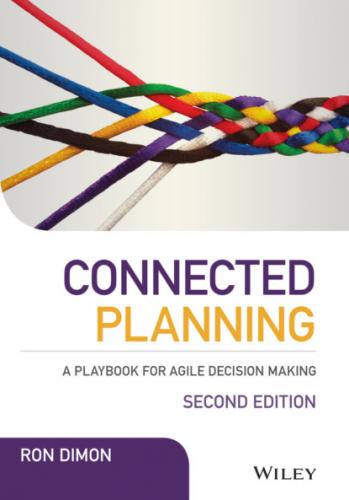Impact
But why bother? What difference can Connected Planning make in your organization? You can look at the benefits in several ways:
1 Management Efficiency. Connected Planning enables standard management processes that every company must do well:Budgeting, planning, and forecastingManagement reporting and business intelligenceProfitability analysisConnecting strategy, finance, and operationsConnected Planning leverages the investment you have already made in Enterprise Resource Management, Customer Relationship Management, Supply Chain Management, Sales Force Automation, and other transactional systems.
2 Executing Strategy. As mentioned earlier, Connected Planning can help close the loop between what you want to happen in the business (and how), and what actually happened (and why):Records and documents business model assumptions, constraints, and driversConnects those models into your annual operating plans, budgets, and forecastsMonitors and alerts exceptional variances from actual to planHelps you understand the root causes of variance and plug that corporate knowledge back into the business model and strategyTies it all together with a common business language and common master data to improve visibility, focus, and alignmentGiving more stakeholder alignment.
3 Improving Performance. Connected Planning can have a material impact on the top and bottom lines, on the balance sheet, and on overall return on capital:It can improve visibility into the key drivers of value in the business.It can show the cause and effect relationship of operational metrics on financial performance.It helps you focus on the right things in the business.It can bring agility to business models and organizational structures.Giving better business decisions that are based on more timely information.
4 Reducing Risk. By improving transparency and the right access to information, managers can see for themselves where the business is and can test operational and financial models to help make the best resource deployment decisions:Global governance and compliance of data and reportingAdding a level of accountability for resultsBetter preparation for change, increased predictabilityFewer surprises through better collaboration and communication
5 Competitive Advantage. Organizations that get Connected Planning right are more nimble than those who don't.Better strategy formulation and planningLess complexity and lower costs by unifying management informationIncreased organizational flexibility (mergers and acquisitions, organizational changes)
Notes
1 1. “Data, Data Everywhere,” The Economist, February 25, 2010, www.economist.com/node/15557443, retrieved October 16, 2012.
2 2. I first heard this expression from Godfrey Sullivan, then CEO of Hyperion Solutions. It's meant to express the frustration of information silos and the longing to unlock the value of shared intelligence. For example, when pursuing a new prospect, wouldn't it be good to know how employees in your company may be connected to employees in the prospect company?
3 3. “How Hierarchy Can Hurt Strategy Execution,” Harvard Business Review, July 2010, http://hbr.org/2010/07/how-hierarchy-can-hurt-strategy-execution/ar/1, retrieved October 16, 2012.
4 4. Roger L. Martin, “The Execution Trap,” Harvard Business Review, July–August 2010, http://hbr.org/2010/07/the-execution-trap/ar/1, retrieved November 16, 2012.
5 5. David Axson, Best Practices in Planning and Performance Management (John Wiley & Sons, 2007).
CHAPTER 2 Connected Planning
Everybody has a plan 'til they get punched in the face.
—MIKE TYSON
When I started working with FP&A (Financial Planning and Analytics) teams in Canada and the United States, around the mid-1990s, it was called Budgeting. It was usually the annual budget of what a business unit or department could spend, and what their anticipated revenue was. It was a monthly look, at a summarized level, of what an organization thought its income statement was going to be at the end of the year. Of course, it was out-of-date about a month after it was published. Later, in the late 1990s and early 2000s, operational planning was going on throughout the supply chain function, including demand planning and IBP (Integrated Business Planning), which matched demand with capacity and supply. A more sophisticated version of that was called S&OP (Sales and Operations Planning). When companies talked about IBP, it was said, as the acronym implied, as if the business plans were all integrated. Yet there were, and still are, all sorts of other strategic, financial, and operational planning taking place in every business function at all layers of the organization chart. There needed to be a new term to capture the totality of all planning, forecasting, and what-if modeling going on across the enterprise.
I first heard the term Connected Planning when working with Doug Smith and the team at Anaplan. Doug, one of the co-founders of Anaplan, was a visionary technologist and CFO (in addition to wearing many other hats). His vision included interconnecting these various plans throughout the organization—and even outside its four walls to its entire ecosystem—to have a truly integrated cause-and-effect planning system. This would go beyond and yet include IBP, S&OP, demand planning, price planning, workforce planning, capital planning, project planning, and financial planning. There are, possibly, an infinite number and kinds of plans, forecasts, and models in every industry. This book explores some of the more popular use cases, and helps you develop your own unique ones over time.
Since I started to think in a Connected Planning way, I noticed the possibility of all the things that this idea—and recently this system and process—can and does connect:
1 PeopleExecutives, business managers, team managers, individual contributors, analysts, advisors, investorsNew hires, prospective hires, tenured staff
2 OrganizationsCompanies, suppliers, business partners, banksThird partiesCustomers
3 ProcessPlanning itself, Management and Statutory Reporting, Analytics, Modeling, GovernanceDecision-making processesResource deployment processes
4 DataFinancial, operational, statistical, unstructuredDimensions, hierarchies, master data, metadata
5 Business functions and layersMarketing, Sales, Ops, R&D, shared services, etc.Strategic, operational, financial layers including management, tactical operations, front lines, and back office
6 Plan typesFinance (annual operating plan, headcount plan, selling, general, and administrative [SG&A], capital expenditure [CAPEX])Strategic (long-range plans, mergers and acquisitions planning)Operational (price plan, territory and quota plans, workforce, project, etc.)
7 ImpactsAccountability and transparencyDrivers and outcomesStrategy, execution, and performance
8 Past/Present/FutureHistoric
